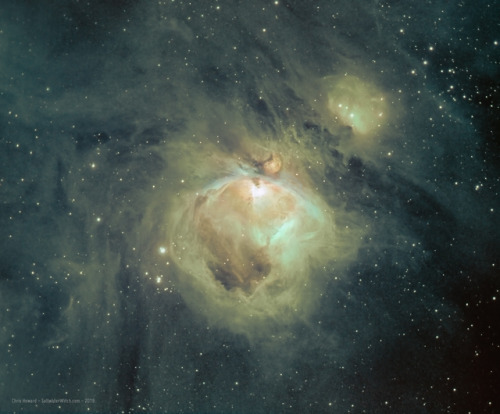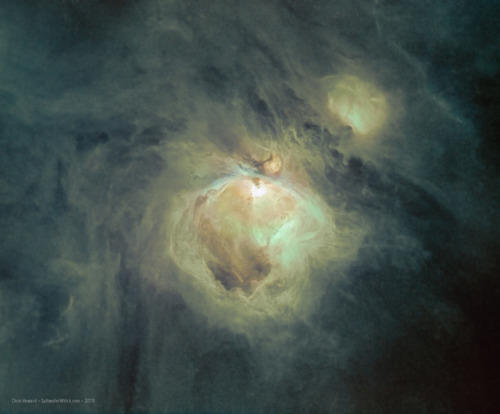Orion Nebula (M42) in the SHO Hubble Palette - with and without...


Orion Nebula (M42) in the SHO Hubble Palette - with and without stars - I have been thinking about how to represent false-color imaging for deep sky objects, and I’ve been keeping more of that abundant hydrogen green in the mix when doing SHO Hubble Palette images, where we map Sulfur, Hydrogen, and Oxygen bandpasses to Red Green Blue (RGB). Because hydrogen is–by a wide margin–the most abundant element in the universe, and many of these nebulae are HII Regions (vast expanses of interstellar atomic hydrogen that’s ionized), there ought to be way more green in SHO images than we normally see. It’s become standard go heavy on a rust red and deep blue, with almost of the green removed. All of these color choices are esthetic choices. The images I’m posting come from the data from three separate filters, Ha, OIII, and SII, so in a sense there are no incorrect color levels–within reason.
You do see a lot of color (LRGB) imaging with a target like M42, and with corresponding heavy reds and browns of bandpasses on the red end of the spectrum–and heading off into infrared. Most of my shots of Orion Nebula from past years has been in RGB with a luminance layer.
In the first set I toned the hydrogen green way down until I’m just getting a nice hydrogen green cast over everything.
Imaging notes: William Optics GT81 at f/4.7 with WO 0.8x Flat6A II, Astronomik Ha, OIII, SII 6nm filters, Moonlite focuser, ZWO ASI Cameras ASI120MM OAG, Imaging camera: ZWO ASI1600MM Pro cooled mono on an Orion Atlas EQ-G mount. Stacked in DSS, processed in PS CC 2019. 40 x 120 second exposures for each filter.



